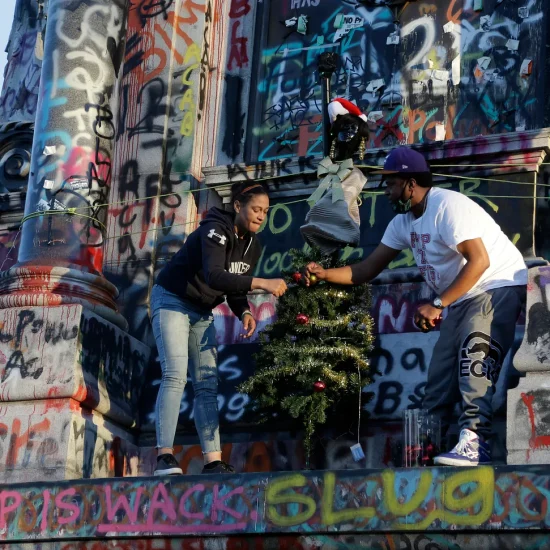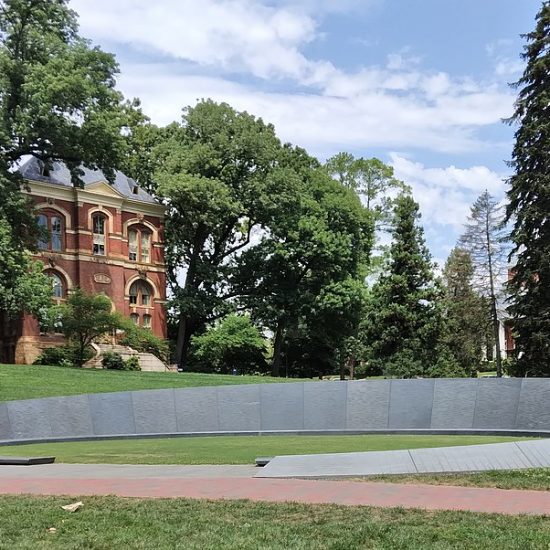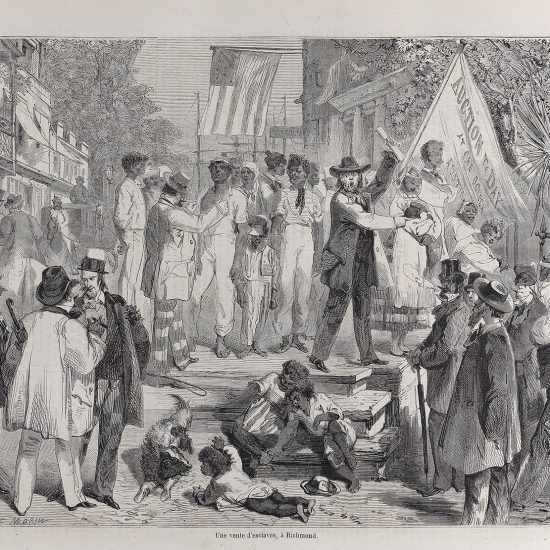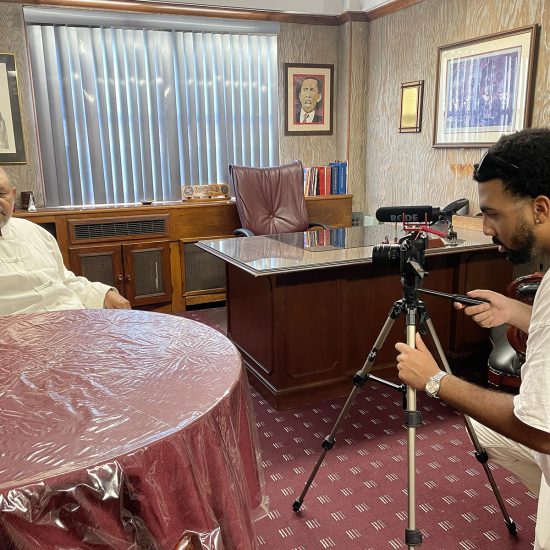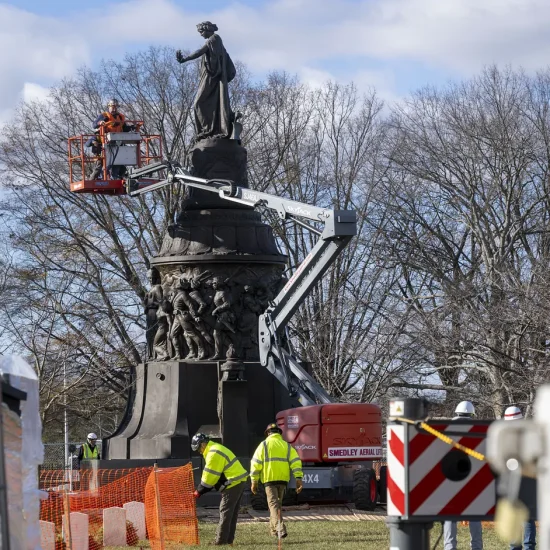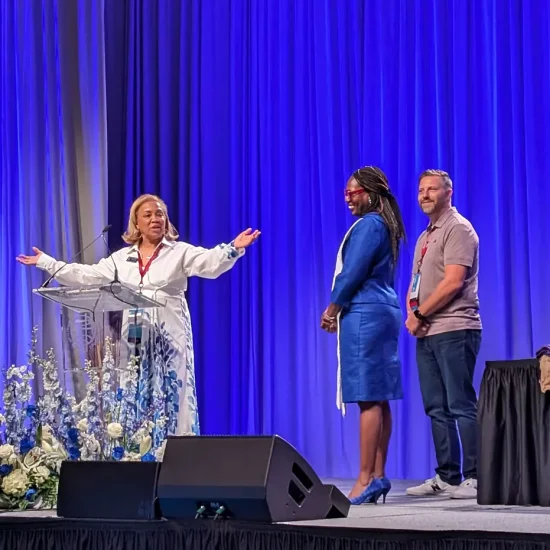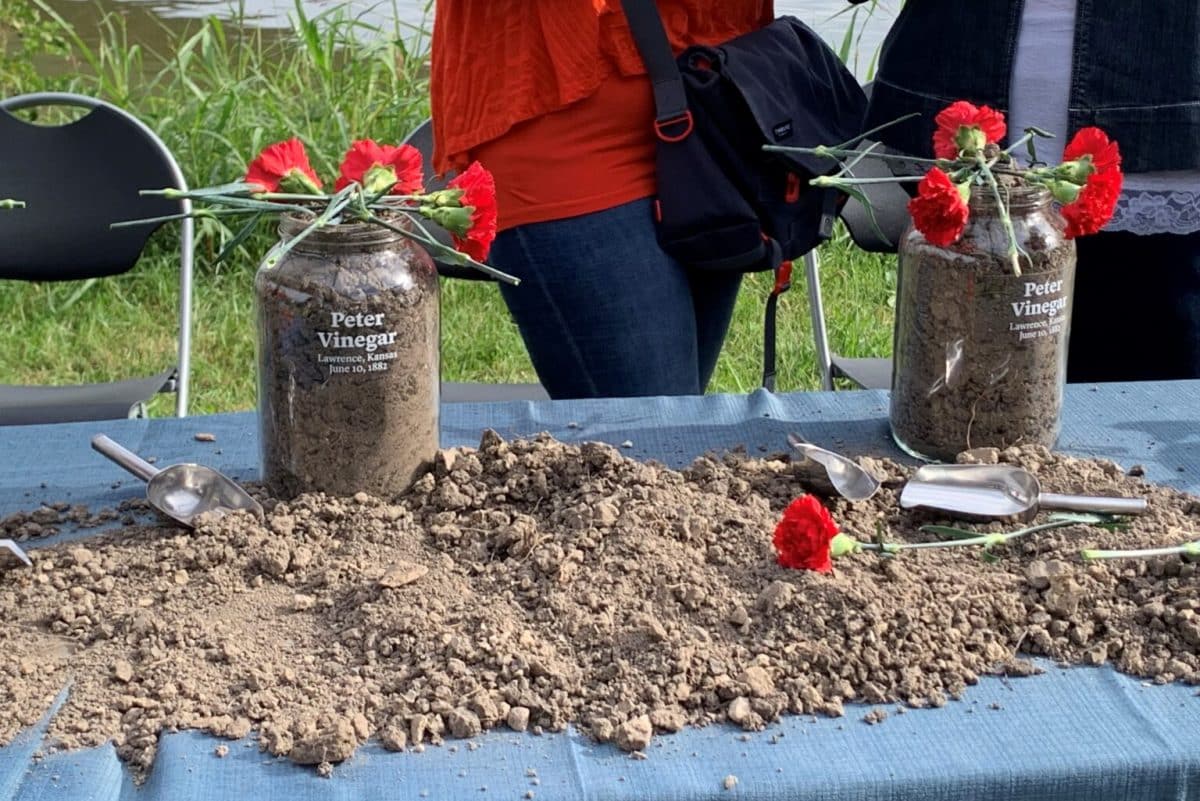
Yet the spirit didn’t hail from the past. It was a keen awareness of the present, and the opportunities we could all share in the future.
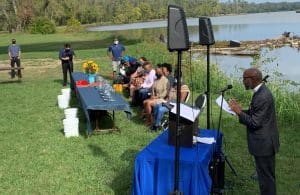
Rev. Verdell Taylor speaks to the crowd on the morning of Oct. 9, 2021. (Clay Wirestone/Kansas Reflector)
“If we are so naïve as to think we don’t have problems right here, as the song says, right here in River City, then we’re deceiving ourselves,” said Rev. Verdell Taylor, one of the Soil Collection Ceremony’s featured speakers. “We have our share of problems. But we have a community that can come together and help us work through these problems.”
Three Black men — Pete Vinegar, George Robertson, and Isaac King — were lynched in Lawrence, Kansas, on June 10, 1882. Vinegar’s 14-year-old daughter, Margaret “Sis” Vinegar, was imprisoned and died of tuberculosis seven years later, no less a victim than the three men. The event Saturday was the first in a series remembering these four souls, with soil taken from the area of the lynching placed in jars bound for the the National Memorial for Peace and Justice in Montgomery, Alabama. The memorial commemorates those across the nation who lost their lives to racial terror. In Kansas, Taylor said, 22 lost their lives through such violence from 1865 to 1950.
As related by Taylor on Oct. 9, the story was simple and devastating. The more than 100 in attendance listened, quiet while traffic thundered overhead.
Robertson and King found a White man sexually assaulting Margaret. He was killed. In the tumultuous aftermath, both Margaret and her father, as well as Robertson and King, were all arrested and imprisoned. That wasn’t enough for the town’s outraged mob; these supposedly upstanding Lawrencians broke into the jail and seized the accused. A vote was taken on whether to kill Margaret; she escaped immediate death by a single-vote margin.
At least 100 white men hanged the elder Vinegar, Robertson and King over the side of the old Kansas River bridge and left them there until morning. Even though many members of the community participated and watched, no one was ever charged or convicted in the deaths. Margaret, meanwhile, was convicted of murder and spent the rest of her short life in prison.
Ursula Minor, president of the Lawrence Branch NAACP, read a summary of the learning journey that led organizers to the banks of the Kansas River. She underlined how a community that defined itself by the struggle to abolish slavery still birthed racial violence. But Minor also described how the Black community responded back in 1882, standing up for the best principles of the city and nation.
“Members of the Black community of Lawrence demonstrated immense courage when they held a meeting at the courthouse during the evening of June 10 to do just that: Speak out against the injustice that occurred,” she said. “And many other Black community members wanted to attend but feared retribution. … Those who did attend adopted a resolution stating that as law-abiding citizens, we view with alarm the spirit of lawlessness, which under the garb of upholding a purified law, often violates the first principle of justice.” This day, she noted, was the first of many to finally bring such justice.
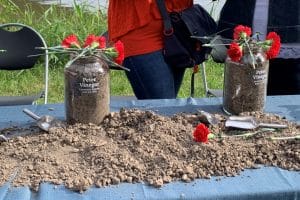
After the lynching memorial event, jars filled with soil and destined for the National Memorial for Peace and Justice sat on tables in front of the crowd. (Clay Wirestone/Kansas Reflector)
The diverse crowd assembled by the riverfront that morning featured young and old, Black and White. But we were surely united in our horror and revulsion at hearing what happened nearly 140 years ago.
Those of us who are White shouldn’t kid ourselves, either — our ancestors knew what they were doing was wrong. The moral clarity demonstrated by the Black community back in 1882 shows that. Our surroundings shift, but “thou shalt not kill” has been a mainstay of moral teaching for ages. How much have we advanced, really? How often when news of the killing of another young black person comes across the news do we ask: “What were they doing?” As though a possible infraction excuses deadly force.
It takes a clear-eyed view of the past to accept our shortcomings in the present. That was part of the message of Lawrence City Commissioner Lisa Larsen, who welcomed the audience and spoke about the Lawrence/Douglas County Community Remembrance Project Coalition, which is working to commemorate the slayings.
“With each meeting, we work to shine light on the truth and find a pathway to healing,” she said. “For this phase of our project, we offer you an opportunity to join us and in memorializing our community members, and to summon the courage within all of us to begin the truthful conversations that will set us free.”
As Larson suggested, Lawrence and Douglas County have much ground to cover on this journey. Minor told me that “a year of learning” is planned, with upcoming events listed on the Coalition’s Facebook. The group hopes to bring a marker to city hall and hold a ceremony for Juneteenth next year, the 140th anniversary of the three men’s deaths.
The spirit in the crowd that day was difficult to define. Memory was a part of it, with longtime Lawrence residents like myself recontextualizing what we thought we knew about this “blue dot” on the prairie. Grief was part of it too, as the water in my eyes reminded me. But it seems, on reflection, that the greater part of this spirit was hope and determination. Hope that we can continue to do better for all of the people of color who live in Lawrence and Kansas, and determination that we never lose sight of the goal.
On Monday, Minor described her emotions as the event wound down.
“I felt so much inside, the thoughts that this happened in Lawrence, that this has happened to so many Black people, their families, their stories,” she said. “We started talking about becoming a part of the lynching memorial project in 2019, reading about the lynchings, planning, working together, and to be standing together with the community to honor the victims was something that needed to happen. This was so powerful, and moving, at some point all I could do was just stand there.
“When it was over some of us went and tossed carnations on top of the only pier that was part of the bridge that they were lynched from.”
This article is reprinted with permission from the Kansas Reflector, which is part of States Newsroom, a network of news bureaus supported by grants and a coalition of donors as a 501c(3) public charity. Kansas Reflector maintains editorial independence. Contact Editor Sherman Smith for questions: info@kansasreflector.com. Follow Kansas Reflector on Facebook and Twitter.

